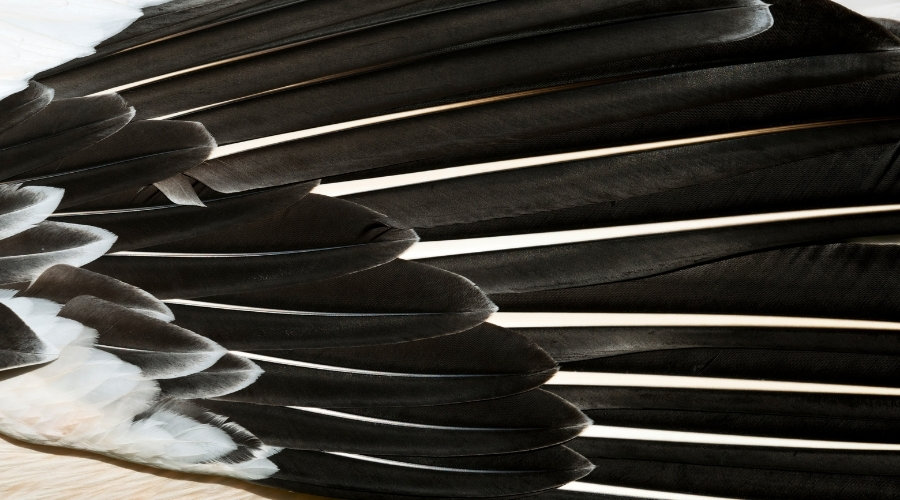A bird’s feathers can weigh more than its skeleton. In fact, birds have uniquely light bones because of their need for feathers.
While the number and type of feathers vary from species to species, it is one of the easiest ways to identify a bird. Do all birds have feathers?
Table of Contents
Do All Birds Have Feathers
All birds have feathers. Precocial species like ducks, are born with feathers, while Altricial birds like parrots and songbirds grow feathers after they are born. Their feathers are used for flying, temperature control, protection and attracting mates. The type of feathers, quantity, length, and use will vary depending on the species of bird.
The only birds who have no feathers naturally are newly hatched altricial. Because of their different lifestyles and needs, some species can afford blind, bald, completely dependent babies.
Most of these live high in trees where few predators can reach them. Others that more commonly nest on the ground like swans spend very little time in their nest and begin to swim after about a day.
Ultimately, it’s all about survival. It costs a newborn chick lots of energy to grow feathers in the egg, so waiting to do so later can be beneficial.
However, if your species nests down low where more predators can get you, it’s worth the energy to develop more beforehand because it increases your life expectancy.
Tree birds tend to have fewer eggs and spend more time nest-raising them and protecting them. Meanwhile, ground birds often have more eggs because the mortality rates are higher.
Young, inexperienced birds make easy meals for cats, dogs, foxes, and many other animals.
Do All Birds Have Down Feathers
All birds grow down feathers. However, not all species frow the same quantity of down. Typically, birds who come from higher elevations have the most down feathers because they use them for body insulation and staying warm.
Down is not like other feathers. It resembles a fluff of cotton or dandelion more than a flight feather. The texture and shape help to trap air near the birds’ bodies.
Their natural heat warms the air, so birds travel around with their own blanket of warm, fluffy insulation.
A bird grows six different types of feathers. The list below explains each one briefly.
- Flight Contour – Most of the surface of a bird is made of flight contour feathers. These are often brightly colored or patterned, and they may be waterproof in some species.
- Semiplume – Semiplume feathers may also be colorful. These looser, fluffy feathers resemble down, though they are not the down feathers and tend to be larger and longer.
- Bristle – The bristle feathers are often found on a bird’s head and are the simplest feathers. These feathers have a stiff rachis (the central column of the feather) which usually lacks barb branches.
- Filoplume – Filoplumes often look like the opposite of bristle feathers. These are often decorative feathers and are thought to help the bird gauge wind pressure and direction.
- Powder Down – Powder down feathers, unlike other feathers, never get molted. Instead, they grow continuously, and the tips eventually disintegrate into a fine powder as they grow out, which is where they get the name.
Which Birds Do Not Have Feathers
Every bird has feathers. In fact, having feathers is one of the major defining characteristics of being a bird. However, the feathers’ type, color, length, use, and the quantity depend on the species.
Penguins may appear smooth and featherless, but they actually have more feathers than any other species. An average penguin has as many as a hundred feathers per square inch of skin.
Moreover, penguins molt all their feathers about once per year to make room for new growth. Typically, this happens at the end of the breeding season.
Birds Who Pull Their Feathers Out
Some birds, such as domestic parrots, pluck their own feathers. This can be dangerous and is a form of self-harm. Additionally, it can leave portions of the bird featherless.
You will still see feathers on the heads of these birds even if they manage to deplume the rest of their bodies. Birds’ beaks cannot reach the face or back of their own head.
Despite the incredible range of neck motion some species like owls have, turning a hundred and eighty degrees, it is physically impossible to bite the back of your own head regardless of which way you turn.
Self-plucking comes from two main sources. First, it can be a psychological outlet. Birds are brilliant, and they may pluck if they get bored, depressed, or suffer from anxiety.
Loneliness and loss, such as losing a longtime mate, friend, or even a human caregiver, can also lead to this sort of emotional plucking. Even sexual frustration can lead to plucking.
Secondly, a bird may pluck its feathers if it is uncomfortable or in pain. Malnutrition is one source of this odd behavior.
However, infections, skin conditions, and parasites also cause self-plucking. Other potential problems include bacterial and fungal growth, exposure to toxins, or even an underlying disease.
If your pet bird is pulling its feathers out, there are plenty of ways to help them. Start with a visit to your veterinarian. They can give the bird a physical exam and run tests to determine the specific cause of the picking.
After that, your bird will receive a diagnosis, and the vet can help you prevent future picking and make suggestions to help them.
Why Do Birds Have Feathers
Bird feathers are evolution’s way of protecting a bird. While not all species grow flight feathers, the feathers on every bird help to protect their body from the outside world.
From dampening the impact from a fall or crash to preventing scratches and keeping them warm in winter, feathers are vital for a birds’ health.
Some feathers are used for communication. Mating dances, warning signals, and other feather displays are part of many avian species’ languages.
Birds will spend time daily grooming their feathers with their beaks to keep them in peak condition. Well-groomed feathers are a sign of a happy, healthy, thriving bird.
Helpful Tips To Know About Bird Feathers
Bird feathers are highly specialized. Depending on the species, every aspect of the feathers is significant and often very different.
Some birds need waterproof feathers for swimming and diving, and others only need to flit briefly through dense trees.
Here are a few more helpful tips to know about bird feathers.
- Dry, brittle, and unusually pale bird feathers may indicate that the animal isn’t getting enough sunlight or is otherwise ill. Additionally, birds use their feathers in place of sunscreen to protect their skin.
- Feather mites or Epidermoptidae chew holes in bird feathers. This can harm the bird significantly.
- The long hollow part at the center of a bird feather is known as a quill or rachis.
- Birds are believed to be the descendants of dinosaurs, who also likely sported plumage of their own.
- The oldest fossil of a bird feather comes from a species called the Archaeopteryx. According to Science Alert, this feather is roughly a hundred and fifty million years old.
Final Thoughts
Bird feathers are incredible. Early ancestors of modern birds, the dinosaurs, are now believed to have had feathers more often than not.
By growing feathers, birds can fly, put on intricate and beautiful mating displays and insulate their bodies to protect against the cold. Some birds run or swim instead of using their wings for flight, but all birds grow feathers.

